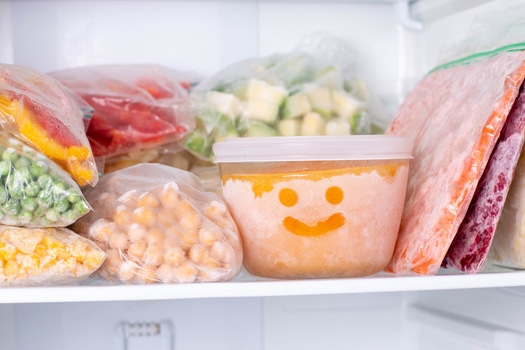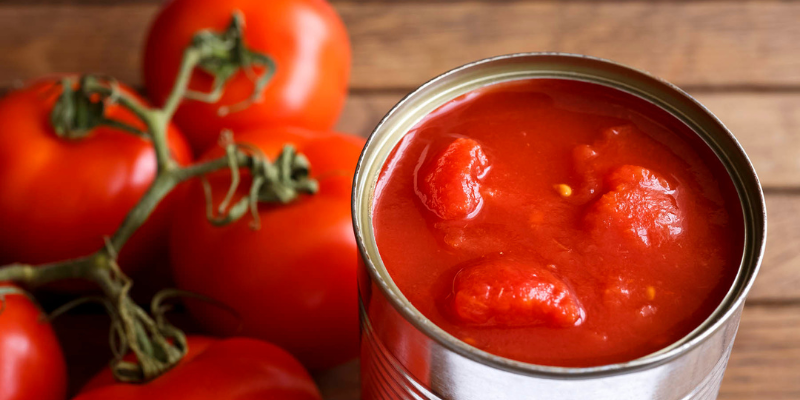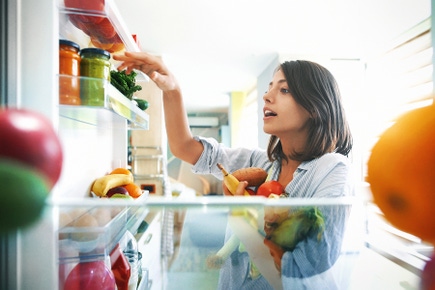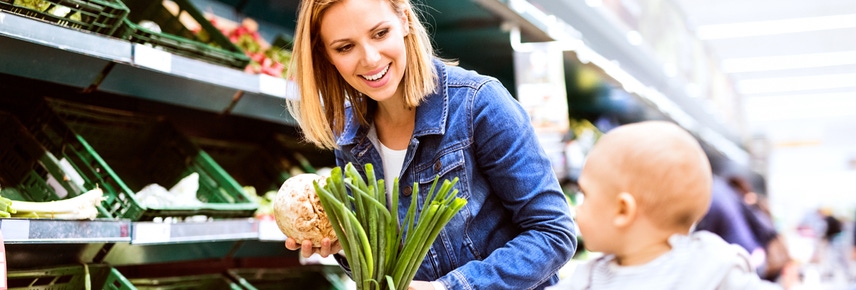
Is the 5 second rule a thing? And other food questions you’re too embarrassed to ask.
We’re all guilty of snatching up a dropped piece of food while preparing meals, or sniffing a suspect tub of leftovers before diving in with a fork - but are these foods still safe to eat? We have the answers to these, and other food questions with a high “ewwww” factor!
Is the 5 second rule a thing?
The 5 second rule suggests that if you quickly pick up a piece of food that has fallen to the floor it will be safe to eat.
The reasoning is that if you pick it up quickly enough, there will not be enough time for microorganisms to transfer from the contaminated surface onto the food. Unfortunately, science does not support this hypothesis. Researchers have found that bacteria can instantaneously transfer to food.
The speed at which bacteria transfers is dependent upon the type and texture of the food, with wet food picking up more bacteria at a faster rate than dry food. Not surprisingly, it was found that the longer a food item sits on a contaminated surface, the more bacteria are transferred.
Regardless, the 5 second rule does not stand up to scrutiny and it is safer to pop the dropped morsel in the compost bin.
Can I eat foods past the “best before” date?
We’ve all experienced the indecision of whether to eat foods that are a few days beyond the best before date, but what is safe?
‘Best before’ and ‘used by’ dates let you know how long a food can be kept before it deteriorates but there is a distinct difference.
The best before date simply indicates the food may lose some of its quality after this date.
It should still be safe to eat after the best before date, as long as it is not damaged, deteriorated or perished. If stored correctly, these foods should have kept their colour, taste, texture and flavour. You will see best before dates on foods like cereals, canned foods, biscuits, frozen foods and chocolate. Foods with a shelf life more than 2 years don't need to show a "best before" date.
On the other hand, if something is past its use-by date it should be thrown out and must not be eaten. Some foods deteriorate over time and nutrients in the food may become unstable or contain a build-up of bacteria. So even if the food looks ok and smells ok, don’t consume foods that are past their used by date. Common foods that have a use by date include dairy foods, meat and deli products.
And how about that dodgy container of leftovers at the back of the fridge? Well, it is recommended to eat it within 2 days and to reheat until it is piping hot (at least 75oC).
Are fresh veggies healthier than frozen or canned?
Frozen and canned veggies can be just as healthy as fresh veggies.
Many frozen fruits and vegetables available at supermarkets have been snap-frozen, a process that locks in nutrients. These items are often more nutrient rich than produce that has been sitting on the shelf for long periods.
Canned food are often packed immediately after the produce is picked with minimal impact on the nutrients. In fact, tinned tomatoes are even healthier showing an increase in lycopene (a plant nutrient with antioxidant properties). When choosing canned veggies, it is best to look for ones without added salt and sugar.
Is it safe to store open cans in the fridge?
According to the CSIRO, this is a major no-no, particularly with acidic foods like fruit juices and tomatoes as tin and iron can leak into the food making it not only taste terrible, but bad for your health.
Foods left to the open fridge air will dry out and take on flavours lurking in the fridge.
If you don’t use the whole can, do yourself a favour and store the leftovers in a resealable container – your taste buds and your gut will thank you.
Can I refreeze food?
It’s safer to avoid refreezing food. Freezing does not kill bacteria and food poisoning bacteria can grow in frozen food while it is thawing, especially if not thawed in the fridge. This means food frozen a second time is likely to have higher levels of bacteria.
Here’s some rules to stick to reduce risk of food poisoning when it comes to freezing food:
- Thaw foods in the fridge or microwave, not the benchtop,
- Keep defrosted food in the fridge until it is ready to be cooked,
- If using a microwave oven to defrost food, cook it immediately after defrosting, and
- Do not refreeze raw food once thawed.
But what about if something has been frozen, thawed and cooked, can you freeze it again? The answer is yes but it’s important to thaw in the fridge and reheat food well.
Looking for more? Here’s some more tips on food safety.

The latest nutrition advice, plus health and wellness tips delivered to your inbox monthly


